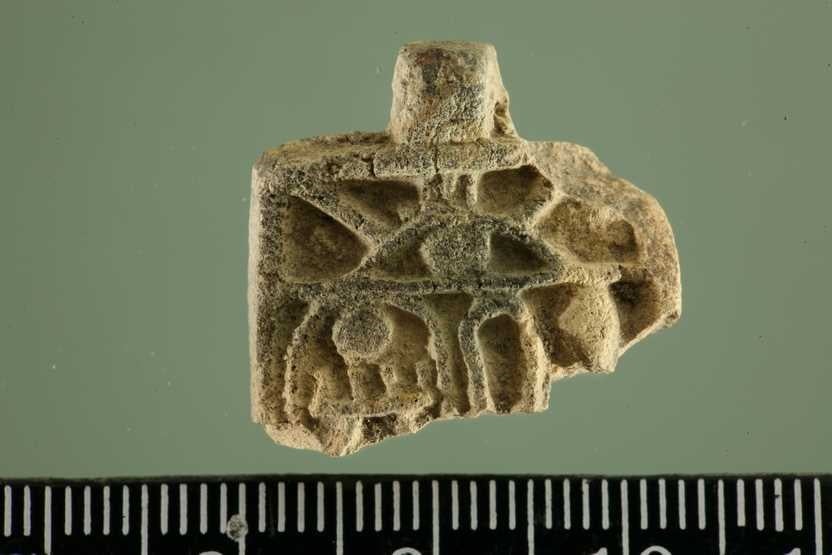Cart is empty
A rare Egyptian amulet over 3200 years old has been discovered in Jerusalem in dirt removed from the Temple Mount.
The amulet was discovered by a 12-year-old girl who came with her family to participate in the project to sift the dirt from the Temple Mount in Emek Tzurim National Park.
Neshama Spielman is the child who discovered the amulet while on a family outing at the site.
“I came to sift dirt in Emek Tzurim with my family, and when I was in the middle of sifting, I suddenly saw a rectangular piece of pottery that was different from all the other dirt.” Neshama described the moment she found the amulet. “The rectangle was bisected by a curved line, and I realized that it was something special immediately, but didn’t know what it was. I was excited that I had found something different, and my father immediately went to an archaeologist to check what it was. They took it to be tested at the laboratory, and then they called to tell us that it was an amulet from the time of Pharaoh, king of Egypt.” .
It is a small find in the form of a rectangular plate pendant, the lower half of which is broken. Its dimensions: width 21 mm, its preserved height: 16 mm, and its thickness – about 4 mm. It is made of a brown faience that has lost its glaze. The amulet has an embossed decoration, the result of its design in a mold. At the top of the amulet there is a loop intended for threading through, which made it possible to wear it on the body. There is a cartouche embossment on the face of the amulet – an oval frame, inside which signs in the Egyptian script were found, constituting the name of the reining pharaoh, King of Egypt, Thutmose III, who reigned between 1425 and 1473 BCE. King Thutmose III was one of the most important kings in the New Kingdom of Egypt; he was of the 18th Egyptian dynasty, and is considered the founder of the Egyptian imperial province in Canaan. He conducted 17 campaigns to Israel and Syria, and defeated an alliance of Canaanite kings at Megiddo in a battle in 1457 BCE. He called himself the “conqueror of 1000 cities”.




